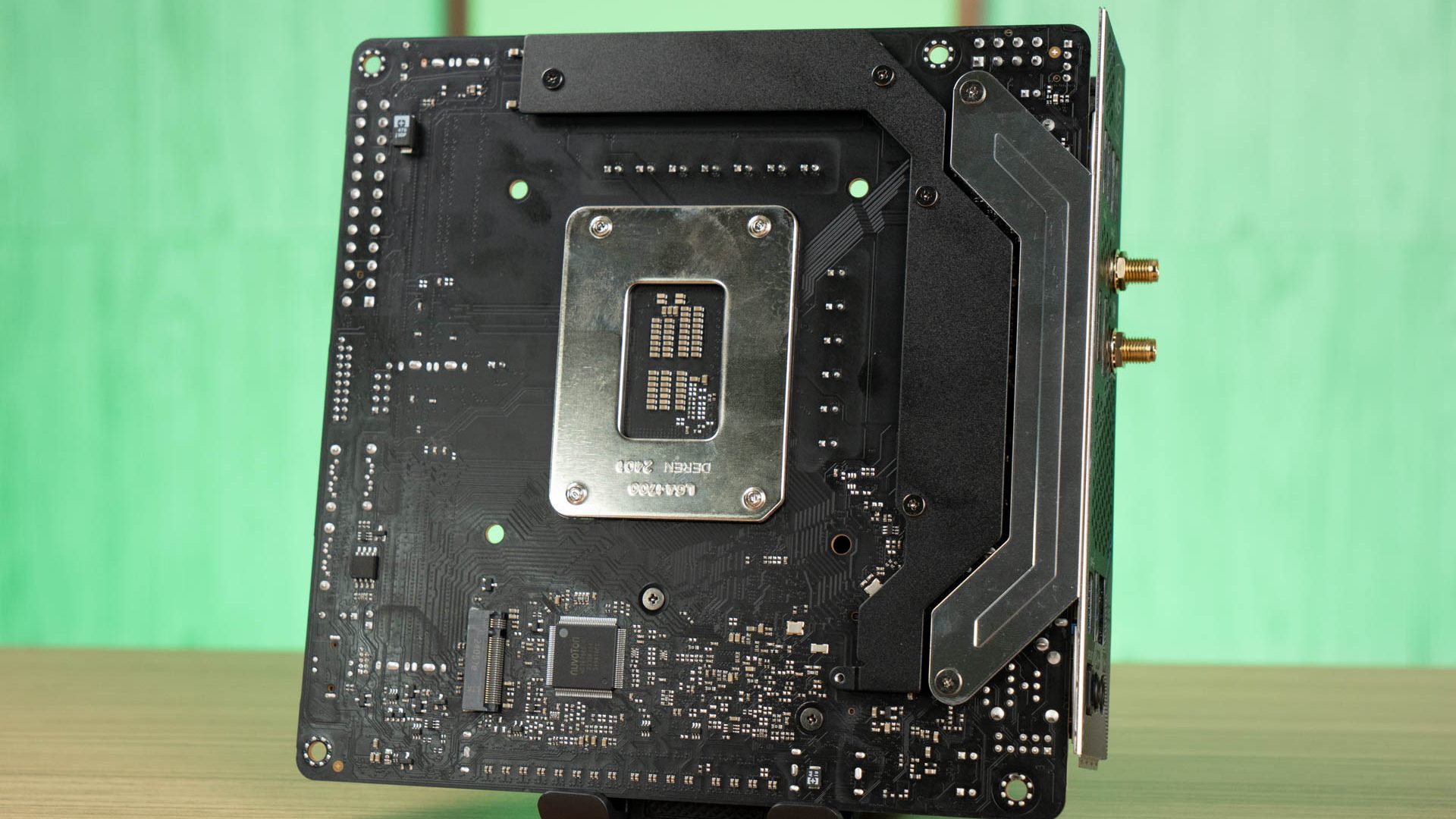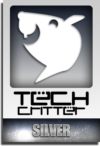The Z790I Lightning WiFi is the latest ITX motherboard from ASRock that is designed for users building compact PCs. Other than the support for the latest 12th, 13th, and 14th generation Intel Core processors (LGA1700 socket), it also features a plethora of features you can expect on a high-end Z790 chipset motherboard, notably the DDR5-8600+ support. In this article, we explore the key specifications, potential benefits, and drawbacks of this motherboard.
Specifications
| CPU support | – Supports 14th, 13th & 12th Gen Intel Core Processors (LGA1700) – Supports Intel Hybrid Technology – Supports Intel Turbo Boost Max 3.0 Technology – Supports Intel Thermal Velocity Boost (TVB) – Supports Intel Adaptive Boost Technology (ABT) |
| Chipset | Intel Z790 |
| Memory | – Dual Channel DDR5 Memory Technology – 2 x DDR5 DIMM Slots – Supports DDR5 non-ECC, un-buffered memory up to 8600+(OC)* – Max. capacity of system memory: 96GB – Supports Intel Extreme Memory Profile (XMP) 3.0 *1DPC 1R Up to 8600+ MHz (OC), 5600 MHz Natively. 1DPC 2R Up to 7000+ MHz (OC), 5200 MHz Natively. |
| Expansion slots | CPU: – 1 x PCIe 5.0 x16 Slot (PCIE1), supports x16 mode* Chipset: – 1 x M.2 Socket (Key E), supports type 2230 WiFi/BT PCIe WiFi module and Intel CNVio/CNVio2 (Integrated WiFi/BT) * Supports PCIe riser cards to extend one x16 slot to two x8 slots Supports NVMe SSD as boot disks |
| Storage | CPU:– 1 x Blazing M.2 Socket (M2_1, Key M), supports type 2260/2280 PCIe Gen5x4 (128 Gb/s) mode* – 1 x Hyper M.2 Socket (M2_3, Key M), supports type 2260/2280 PCIe Gen4x4 (64 Gb/s) mode* Chipset: – 1 x Hyper M.2 Socket (M2_2, Key M), supports type 2230/2260/2280 PCIe Gen4x4 (64 Gb/s) mode* – 2 x SATA3 6.0 Gb/s Connectors** ASMedia ASM1061: – 2 x SATA3 6.0 Gb/s Connectors* Supports NVMe SSD as boot disks ** If SATA3_0 and SATA3_1 are occupied, PCIE2 will downgrade to x2 mode. |
| Network | LAN: – 2.5 Gigabit LAN 10/100/1000/2500 Mb/s – Dragon RTL8125BG – Supports Phantom Gaming LAN Software – Smart Auto Adjust Bandwidth Control – Visual User-Friendly UI – Visual Network Usage Statistics – Optimized Default Settings for Game, Browser, and Streaming Modes – User Customized Priority Control Wireless LAN– 802.11axe Wi-Fi 6E Module – Supports IEEE 802.11a/b/g/n/ac/ax/axe – Supports Dual-Band 2×2 160MHz with extended 6GHz band* support – 2 antennas to support 2 (Transmit) x 2 (Receive) diversity technology – Supports Bluetooth 5.3 + High speed class II – Supports MU-MIMO |
| Back I/O Ports | – 2 x Antenna Ports – 1 x HDMI Port – 1 x DisplayPort 1.4 – 1 x Optical SPDIF Out Port – 1 x USB 3.2 Gen2 Type-A Port (10 Gb/s) – 1 x USB 3.2 Gen2 Type-C Port (10 Gb/s) – 4 x USB 3.2 Gen1 Ports – 1 x RJ-45 LAN Port – 1 x Line Out Jack (Gold Audio Jack) – 1 x Microphone Input Jack (Gold Audio Jack) |
| Audio | – 7.1 CH HD Audio (Realtek ALC897 Audio Codec) – Nahimic Audio |
| Internal I/O Ports | – 2 x Addressable LED Headers* – 1 x Thermistor Cable Header – 1 x CPU/Water Pump Fan Connector (4-pin) (Smart Fan Speed Control)** – 2 x Chassis Fan Connectors (4-pin)*** – 1 x 24 pin ATX Power Connector – 1 x 8 pin 12V Power Connector (Hi-Density Power Connector) – 1 x Front Panel Audio Connector – 1 x USB 2.0 Header (Supports 2 USB 2.0 ports) – 1 x USB 3.2 Gen1 Header (Supports 2 USB 3.2 Gen1 ports) – 1 x Front Panel Type C USB 3.2 Gen1 Header * Support in total up to 5V/3A, 15W LED Strip ** CPU_FAN1/WP supports the fan power up to 2A (24W). CPU_FAN1/WP can auto detect if 3-pin or 4-pin fan is in use. *** CHA_FAN1 and CHA_FAN2 support the fan power up to 1A (12W). |
| Special Features | Superb Productivity – PCIe Gen5 (Graphics) – Server-Grade Low-Loss PCB – 14+1+1 Power Phase, SPS for VCore+GT with Enlarged Heatsink Armor – Flexible Integrated I/O Shield Ultrafast Gaming – 2.5G LAN, 802.11axe Wi-Fi 6E ModuleEZ Update – ASRock Auto Driver Installer |
| Included accessories | – 2 x SATA Data Cables – 2 x ASRock WiFi 2.4/5/6 GHz Antennas – 1 x Screw for M.2 Socket – 1 x Thermistor Cable |
| Form factor | Mini-ITX Form Factor: 6.7-in x 6.7-in, 170 mm x 170 mm |
Overview
The Z790i Lightning WiFi ships in a simple box with all of its prominent features listed around the box. Inside the box, you’ll find a simple combination of accessories such as the installation guide, thermal probe, SATA cables, velcro straps, a pair of WiFi antennas, and the motherboard itself.
Design-wise, the minimalist all-black design is greatly appreciated and I prefer this more than the Z790 PG-ITX/TB4. The overall layout is pretty standard for an ITX motherboard but we found out that it doesn’t come with any debug LED, which is quite a disappointment because I consider that a bare minimum feature for a Z790 chipset motherboard, which is meant for the enthusiasts market. Another thing to point out is that ASRock didn’t provide any document with the motherboard layout, so you’ll have to look carefully at the labels to know the function of the headers.
For memory, the Z790I Lightning WiFi boasts impressive DDR5 support with speeds up to DDR5-8600+ when overclocked and a maximum memory capacity of 96GB with 2 x 48GB kits. In terms of expansion, the motherboard offers a single full-length PCIe 5.0 x16 slot, ideal for high-performance graphics cards. While storage options are limited due to the compact ITX form factor, you can still fit two M.2 slots supporting PCIe 4.0 x4 NVMe storage devices and three SATA ports allow you to connect traditional SATA HDDs and SSDs.
The Z790i Lightning WiFi features a 14+1+1 phase digital VRM design with 105A DrMOS stages, a very beefy configuration for an ITX motherboard I’d say – more than enough for most users nowadays. This robust power delivery solution provides ample headroom for overclocking and demanding CPU workloads in a compact ITX form factor, which renowned overclocker Splave used to achieve a handful of overclocking world records.
Now we look at the rear I/O, the Z790 Lightning WiFi has a surprisingly limited amount of USB ports despite being a Z790 chipset motherboard, unlike the Z790 PG-ITX/TB4 which has an additional pair of USB 3.2×2 Type-A and Type-C ports. Aside from the USB ports, I hope that ASRock can consider at least including a BIOS flashback button here because it’s a Z790 chipset motherboard that is supposed to be a product targeted at the PC enthusiast’s market.
BIOS
Test system list
| CPU | Intel Core i9-13900K |
| Motherboard | ASRock Z790I Lightning WiFi Phantom Gaming |
| Memory | KLEVV CRAS V RGB DDR5-6000 CL30 (16GB x 2) |
| Graphics Card | GeForce RTX 4070 |
| Power Supply | Cooler Master M2000 Platinum 2000W |
| Primary Storage | Kingston KC3000 2TB |
| CPU Cooler | Cooler Master MasterLiquid PL360 Flux |
| Chassis | Streacom Open BenchTable |
| Operating System | Windows 11 Pro 22H2 |
CPU Load and Thermal Performance
This section examines the thermal performance of the Core i9-13900K processor under CPU load conditions. The Core i9-13900K is Intel’s flagship 13th-gen Core desktop processor with a specified maximum power draw (TDP) of 253W. In real-world testing scenarios, the Core i9-13900K reached a peak power consumption of roughly 280W during CPU load tests.
A more advanced cooling solution such as a custom water cooling setup or a particularly powerful AIO liquid cooler is recommended. Still, since the issue on the Z790 chipset has already been confirmed, this might necessitate adjustments to power settings instead. The optimal approach will depend on individual user requirements and preferences but it’s not that complicated as motherboard manufacturers have already started rolling out new BIOS updates to deal with this.
This slideshow requires JavaScript.
As we cannot get any relevant readings on HWinfo64 right now, a thermal imaging camera was used to assess the temperature of the VRM and chipset heatsink region during testing. The readings around the VRM heatsink during the stress test seem rather reasonable, around 44°C at most, and no performance anomalies were observed throughout the benchmark sessions
Memory overclocking
The cooling solution is the limitation that restricts the extent of achievable CPU overclocking. To maintain reasonable load temperatures, adjustments were made to PL1 and PL2 settings, resulting in a lower overclock than potentially achievable. Memory overclocking, however, demonstrated promising results. The KLEVV CRAS XR5 RGB DDR5-6200 memory kit achieved stable operation at DDR5-8000 with some adjustments.
While we can see ASRock did group the relevant settings better than before, users who are not familiar with these settings might have a hard time finding them, especially when each manufacturer has different names for some of these settings.
This slideshow requires JavaScript.
For DDR5-8000, it didn’t take too much effort to pass the stability test with the settings we used for this quick test but at least we can show that you can achieve the mentioned frequency with ease using the Z790 Lightning WiFi.
This slideshow requires JavaScript.
While we’re unable to achieve the DDR5-8600+ as mentioned in the official specs, we’re still able to achieve DDR5-8266 with the kit we’re using for this test. The attempt on DDR5-8266 takes more effort to stabilize, of course, and it’s the highest we can achieve right now with the Z790 Lightning WiFi.
Thoughts on the ASRock Z790I Lightning WiFi Phantom Gaming
Priced at RM 1,699 according to ASRock, the Z790I Lightning WiFi positions itself as a somewhat budget-friendly option within the Z790 ITX motherboard market here.
While the board boasts a powerful VRM capable of handling demanding processors like the Core i9-14900K and supports high-speed DDR5 memory, it does make some sacrifices in other areas. Lesser USB ports compared to the Z790 PG-ITX/TB4, the absence of WiFi 7, and PCIe Gen5 SSD support that is present on the newer Z790 chipset revision, which might be considerations for users looking to future-proof their build. The absence of the debug LED is probably the biggest issue for me because I consider that the bare minimum feature, even the most budget Z790 chipset motherboard right now.
Despite these limitations, the Z790I Lightning WiFi remains a compelling choice for users, enthusiasts especially, that prioritizes affordability and strong CPU and memory performance in a compact ITX form factor. However, if the faster PCIe Gen5 SSD and WiFi 7, or even more expansion slots is what you need, the larger form factor mATX and ATX motherboard might be a better fit.




























